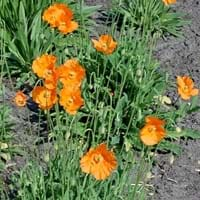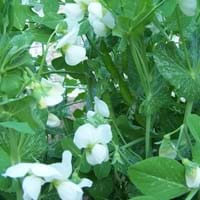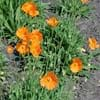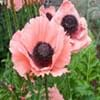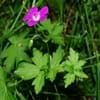Life Span
Perennial
Annual
Type
Flowering Plants
Vegetable
Origin
Northern Africa, Morocco
Mediterranean
Types
Not Available
cowpea , pigeon pea
Number of Varieties
Not Available
Habitat
gardens, Grassland, Roadsides, tropical environments
Fields, Loamy soils
USDA Hardiness Zone
6-8
Not Available
Sunset Zone
2b, 3a, 3b, 4, 5, 6, 7, 8, 9, 14, 15, 16, 17, 18, 19, 20, 21, 22, 23, 24
A1, A2, A3, H1, H2, 1a, 1b, 2a, 2b, 3a, 3b, 4, 5, 6, 7, 8, 9, 10, 11, 12, 13, 14, 15, 16, 17, 18, 19, 20, 21, 22, 23, 24
Habit
Clump-Forming
Vining/Climbing
Minimum Width
Not Available
Flower Color
Orange
White, Pink, Lavender
Flower Color Modifier
Bicolor
Bicolor
Fruit Color
Not Available
Green
Leaf Color in Spring
Light Green, Gray Green
Green, Sea Green, Gray Green
Leaf Color in Summer
Light Green, Gray Green
Not Available
Leaf Color in Fall
Light Green, Gray Green
Green, Blue Green, Gray Green
Leaf Color in Winter
Not Available
Green, Blue Green, Gray Green
Leaf Shape
Egg-shaped
Egg-shaped
Plant Season
Spring, Summer
Spring, Fall, Winter
Sunlight
Full Sun, Partial Sun
Full Sun, Partial Sun
Type of Soil
Loam, Sand
Clay, Loam, Sand
The pH of Soil
Neutral, Alkaline
Neutral
Soil Drainage
Well drained
Well drained
Bloom Time
Late Spring, Early Summer, Summer, Late Summer
Early Spring, Spring, Late Spring, Fall, Late Fall, Early Winter, Winter, Late Winter
Tolerances
Not Available
Variety of soil types
Where to Plant?
Container, Ground, Pot
Ground
How to Plant?
Seedlings
Seedlings
Plant Maintenance
Medium
Medium
Watering Requirements
Form a Soil ring to water efficiently, Requires consistently moist soil, Requires regular watering, Water Deeply
Do not let dry out between waterings, Needs watering once a week
In Summer
Lots of watering
Consistently
In Spring
Moderate
Adequately
In Winter
Average Water
Less Watering
Soil pH
Neutral, Alkaline
Slightly Acidic
Soil Type
Loam, Sand
Clay, Loam, Sand
Soil Drainage Capacity
Well drained
Well drained
Sun Exposure
Full Sun, Partial Sun
Full Sun, Partial Sun
Pruning
Remove damaged leaves, Remove dead branches, Remove dead leaves
No pruning needed, Remove damaged leaves, Remove dead branches, Remove dead leaves
Fertilizers
All-Purpose Liquid Fertilizer
All-Purpose Liquid Fertilizer, Compost
Pests and Diseases
Red blotch
Aphids, Leaf curl, Powdery mildew, Red blotch, Root rot
Plant Tolerance
Drought
Light Frost
Flower Petal Number
Single
Single
Foliage Texture
Medium
Medium
Foliage Sheen
Matte
Matte
Attracts
Not Available
Not Available
Allergy
Skin irritation
Diarrhea, Intestinal gas
Aesthetic Uses
Showy Purposes
Not Used For Aesthetic Purpose
Beauty Benefits
Not Available
For treating wrinkles
Environmental Uses
Air purification
Food for animals
Medicinal Uses
Not Available
No Medicinal Use
Part of Plant Used
Whole plant
Leaves, Seeds
Other Uses
Culinary use, Employed in herbal medicine, Showy Purposes, Used as Ornamental plant
Cosmetics, Making Shampoo, Used as a nutritious food item, Used As Food
Used As Indoor Plant
Yes
No
Used As Outdoor Plant
Yes
Yes
Garden Design
Alpine, Mixed Border, Rock Garden / Wall, Wildflower
Container, Edible, Herb, Vegetable, Vine
Botanical Name
PAPAVER atlanticum
PISUM sativum
Common Name
Atlas Poppy, Moroccan Poppy
Garden Pea
In Hindi
मोरक्को के पोस्ता
मटर
In German
marokkanische Poppy
Erbse
In French
Poppy marocaine
Erbse
In Spanish
marroquí amapola
guisante
In Greek
μαροκινή παπαρούνας
μπιζέλι
In Portuguese
Moroccan Poppy
ervilha
In Polish
marokański Poppy
groch
In Latin
Moroccan Poppy
pea
Phylum
Magnoliophyta
Magnoliophyta
Class
Magnoliopsida
Magnoliopsida
Order
Ranunculales
Fabales
Family
Papaveraceae
Fabaceae
Clade
Angiosperms, Eudicots
Dicotyledonous
Tribe
Not Available
Not Available
Subfamily
Paperveroideae
Not Available
Season and Care of Papaver atlanticum and Garden Pea
Season and care of Papaver atlanticum and Garden Pea is important to know. While considering everything about Papaver atlanticum and Garden Pea Care, growing season is an essential factor. Papaver atlanticum season is Spring and Summer and Garden Pea season is Spring and Summer. The type of soil for Papaver atlanticum is Loam, Sand and for Garden Pea is Clay, Loam, Sand while the PH of soil for Papaver atlanticum is Neutral, Alkaline and for Garden Pea is Neutral.
Papaver atlanticum and Garden Pea Physical Information
Papaver atlanticum and Garden Pea physical information is very important for comparison. Papaver atlanticum height is 30.50 cm and width 20.30 cm whereas Garden Pea height is 30.00 cm and width Not Available. The color specification of Papaver atlanticum and Garden Pea are as follows:
Papaver atlanticum flower color: Orange
Papaver atlanticum leaf color: Light Green and Gray Green
Garden Pea flower color: White, Pink and Lavender
- Garden Pea leaf color: Green, Sea Green and Gray Green
Care of Papaver atlanticum and Garden Pea
Care of Papaver atlanticum and Garden Pea include pruning, fertilizers, watering etc. Papaver atlanticum pruning is done Remove damaged leaves, Remove dead branches and Remove dead leaves and Garden Pea pruning is done No pruning needed, Remove damaged leaves, Remove dead branches and Remove dead leaves. In summer Papaver atlanticum needs Lots of watering and in winter, it needs Average Water. Whereas, in summer Garden Pea needs Consistently and in winter, it needs Less Watering.
